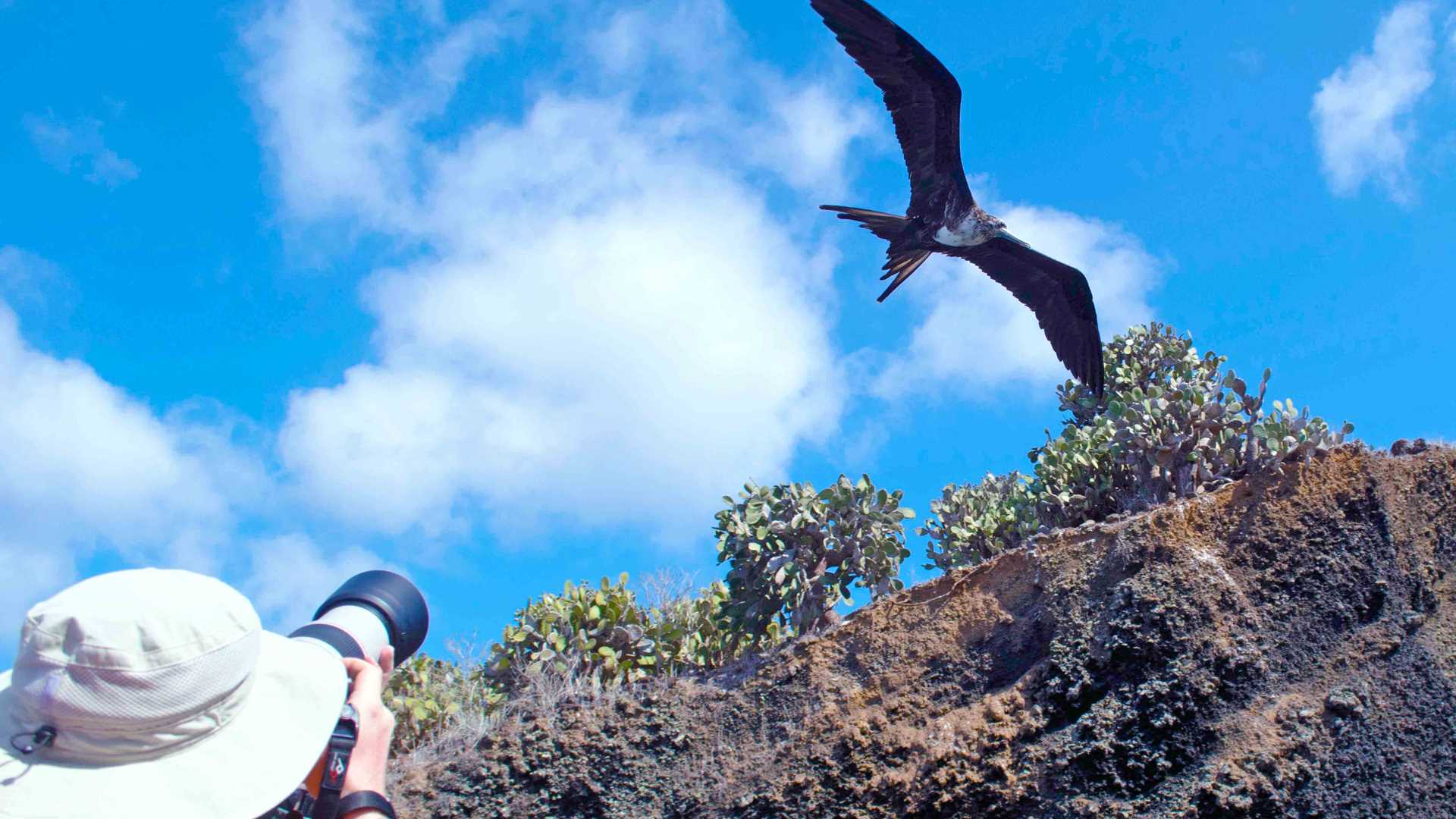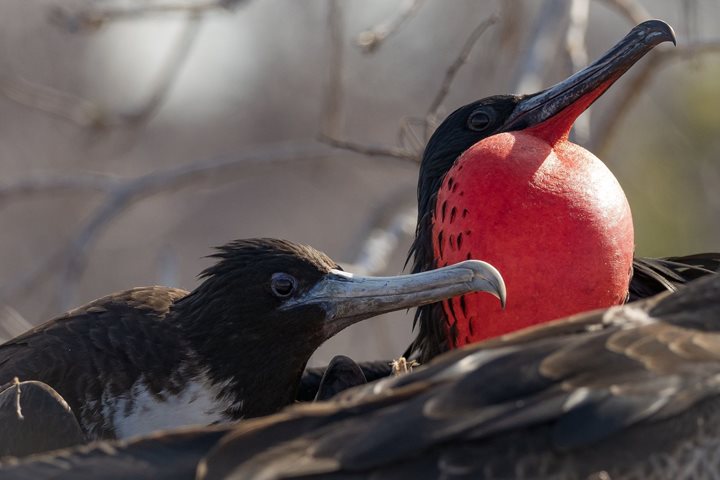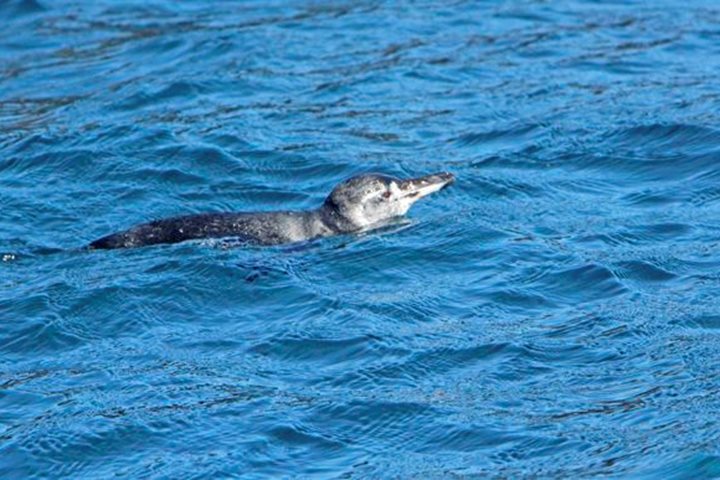We awoke early today to take advantage of the astonishing light conditions of Floreana Island. As soon as we arrived, a group of ruddy turn-stones and sanderlings welcomed us at a black beach made out of olivine crystals. The trail took us to an area where a single flamingo was spotted, feeding in a brackish lagoon surrounded by incense trees, reflecting in the golden waters to make up a stunning and surreal landscape. Later on, we visited a white sandy beach to compare the distinct kinds of sands that can exist on the same island. After such rewarding early morning walk, we came back to the National Geographic Endeavour II for an energizing breakfast.
After breakfast, we explored Champion islet, where we were lucky to spot two of the elusive endangered Floreana mockingbirds. When we find similar but distinct types like the mocking birds in the Galapagos archipelago, it suggests that travelling in between islands for small birds was rare, but not impossible, as previously thought. When Charles Darwin visited the Galapagos in 1835, the distribution of mockingbirds with different beaks among different islands of this archipelago was one of the key clues for his theory of evolution by natural selection. As we witnessed the fragility of these birds, we learned about the efforts of the Galapagos National Park to bring the population of these birds back to their original habitat in Floreana Island. A Zodiac ride around Champion islet was also a great opportunity to get a close look as a frigatebird tried to snatch a piece of placenta from a newborn sea lion. This inspired us to reflect on the cycles of life in the Galapagos, and how every species is somehow interconnected.
In the afternoon, we visited Post Office Bay, one of the most iconic historical places in the islands. We kept up the tradition of delivering post cards into the barrel located in this place and collected others to hand deliver when we return home. Afterwards, we went for a Zodiac ride around the mangroves and rocky shores of Floreana Island. This was a great way to end our day, with sea lions, brown pelicans and blue-footed boobies all around us, performing a natural spectacle. Considering that, at the global level, sea birds are one of the groups most subject to extinction, the exceptional conditions of the Galapagos and its history give us the opportunity to witness a great number of native and endemic bird species. We are privileged to be a part of an historical expedition as the National Geographic Endeavour II is sailing the Galapagos waters for the first time, and we feel like a family, sharing a life-changing experience.







